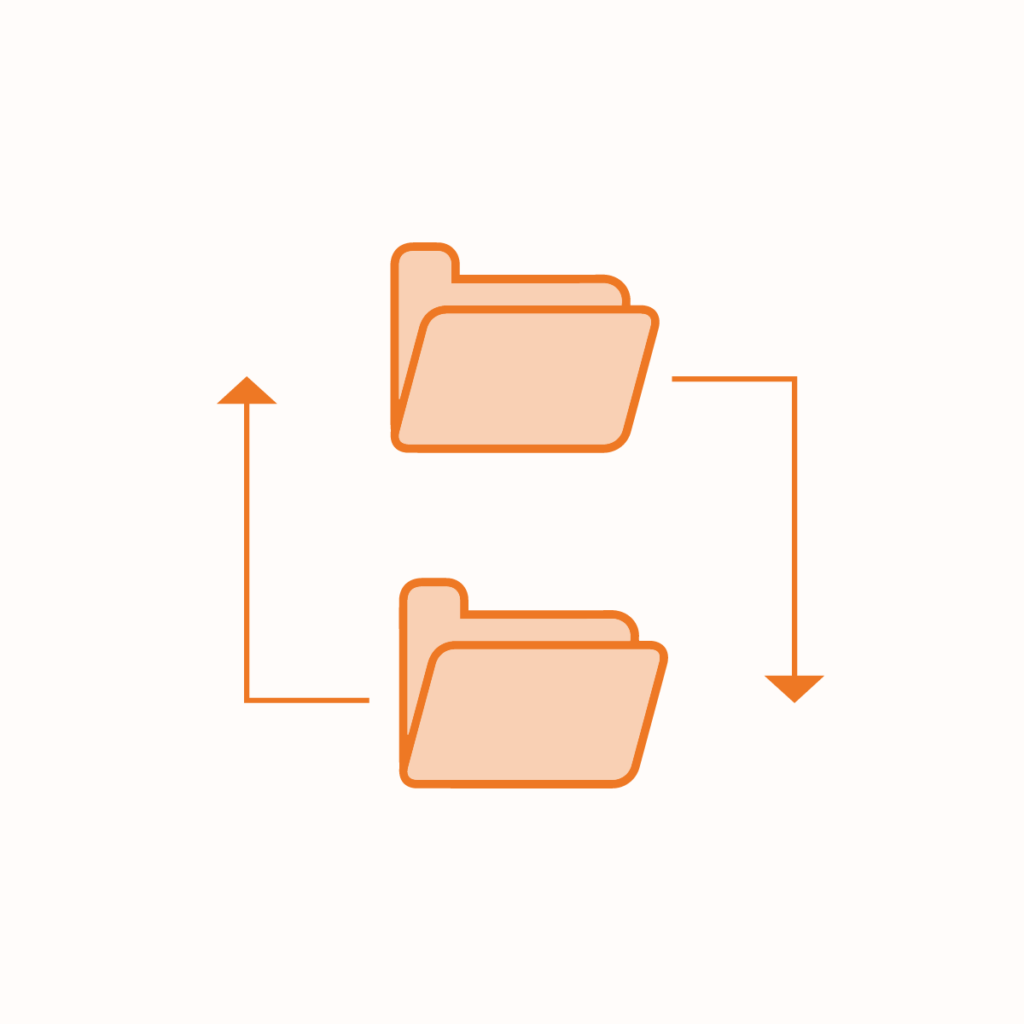In the ever-evolving vast world of data-driven decision-making, the art of data parsing stands as a pivotal pillar. This detailed guide to mastering data parsing intends to explore the deep intricacies of data parsing, delving into its methodologies, significance, and the transformative impact it holds in various industries.
What Is Data Parsing?
Data parsing is the process of converting raw data into a structured, usable format. It involves extracting relevant information from unstructured or semi-structured data sources, such as text files, HTML pages, or JSON objects, and organizing it into a format that can be easily analyzed and processed. This process is crucial for data analysis, enabling businesses to make informed decisions based on clean, structured data. Automated data parsing tools can streamline this process, improving efficiency and accuracy while handling large volumes of data.
Data parsing can be defined as the process of analyzing a sequence of characters or symbols for the extraction of meaningful information. In the context of programming and computer science, data parsing often refers to the interpretation of data in a specific format, like parsing a JSON or XML file to extract relevant data fields.
t involves breaking down large datasets into smaller, meaningful components based on predefined rules or logic. This transformation ensures that data can be effectively processed and leveraged for various applications, such as business intelligence, software development, or machine learning.
For instance, when a web scraping tool extracts HTML code from a website, data parsing is used to isolate specific elements like product names, prices, or reviews. The result is a clean, well-organized dataset, often in formats such as JSON, CSV, or XML, ready for further analysis.
Data parsing plays a critical role in industries like e-commerce, finance, and social media, enabling businesses to derive actionable insights from vast amounts of information. Whether you’re processing API responses or extracting data from PDFs, parsing ensures data is both accessible and actionable.
Benefits of Data Parsing
Data parsing is a powerful process that offers numerous benefits to businesses and organizations handling large volumes of data. By transforming raw, unstructured information into clean, structured formats, data parsing enables more efficient decision-making, operational excellence, and strategic growth. Here are the key benefits of data parsing:
1. Enhanced Data Organization
Data parsing turns chaotic, unstructured data into well-organized formats like JSON, XML, or CSV. This structured format makes it easier to analyze, share, and integrate data into existing workflows, ensuring smooth operations across systems.
2. Improved Data Accuracy
By automating the extraction and formatting process, data parsing reduces the risk of human errors associated with manual data handling. This leads to more reliable datasets, which are crucial for accurate analysis and reporting.
3. Time and Cost Efficiency
Manual data processing can be time-consuming and costly. Data parsing automates repetitive tasks, enabling businesses to process data faster and allocate resources more effectively, saving both time and money.
4. Scalability for Large Datasets
As businesses grow, so does their need to process larger datasets. Data parsing solutions are scalable, allowing companies to handle significant volumes of data efficiently without compromising quality or speed.
5. Streamlined Decision-Making
With parsed data readily available in a structured format, businesses can quickly access the insights they need to make informed decisions. This agility is critical in fast-paced industries like e-commerce, finance, and digital marketing.
6. Customization for Unique Needs
Advanced parsing tools can be tailored to extract and structure data according to specific business requirements. This flexibility ensures that companies can address niche use cases without needing extensive manual intervention.
7. Integration Across Systems
Parsed data can seamlessly integrate with databases, analytics tools, and software applications. This interoperability boosts productivity by enabling smooth data sharing and reducing silos within organizations.
8. Competitive Advantage
In an era where data drives success, having the ability to parse and analyze information quickly can give businesses a significant edge over competitors. From identifying market trends to monitoring competitors, parsed data enables proactive strategies.
Understanding Data Parsing
Unveiling the power of precision in data extraction requires having a robust understanding of data parsing. In view of the foregoing, we will be looking at the fundamental concepts of data parsing and the significance of data parsing in the digital age.
What Does a Data Parser Do?
A data parser is a tool or program designed to identify, extract, and organize specific data points from a larger dataset. By following a set of rules or patterns, it isolates the relevant information while discarding irrelevant or redundant data.
The functionality of a data parser can vary depending on its application:
- Web Data Extraction: A parser processes HTML or JSON from websites to extract targeted information, such as product listings or competitor pricing.
- API Integration: It transforms raw API responses into structured data formats suitable for integration with applications or analytics platforms.
- Document Parsing: From invoices to resumes, data parsers can scan documents and extract key details like names, amounts, or dates.
- Programming Support: Parsers interpret programming language syntax, helping compilers or interpreters understand code.
Advanced data parsers can handle complex tasks like cleaning messy data, resolving formatting inconsistencies, or even applying logic to recognize patterns. Modern tools often incorporate machine learning to enhance accuracy and adapt to changing data structures, ensuring businesses can work efficiently with vast and varied datasets.
Fundamental Concepts Of Data Parsing
Understanding the fundamental concepts of data parsing is essential for effectively implementing data parsing in various programming scenarios and handling diverse data formats. Mentioned below are the fundamental concepts of data parsing:
Grammar And Syntax
Understanding the grammar and syntax of the data format is fundamental to parsing. The preceding involves defining the rules that govern the composition and structure of valid data.
Tokens
During data parsing, the breaking down of data into basic units is called tokens. Tokens are the smallest identifiable units of data, and they are the building blocks for further analysis.
Parsing Algorithms
Various parsing algorithms, such as LR parsing and recursive descent, are used to analyze and interpret the structure of data according to the specified grammar and syntax rules.
Parser Generators
Tools like Yet Another Compiler Compiler (YACC) and Bison automate the generation of parsers based on formal grammar specifications. They generate code that can parse input according to defined rules.
Error Handling
In data parsing, robust error-handling mechanisms are crucial to manage situations where input data deviates from the expected format. This guarantees effective handling of errors and prevents unexpected program behavior.
Abstract Syntax Trees (AST)
ASTs are hierarchical representations of the syntactic structure of parsed data. They provide a structured way to manipulate and navigate the parsed information within a program.
Lexical Analysis
Lexical analysis involves breaking down the input data into tokens, which are then fed into the data parsing process. This step is often handled by a tokenizer or lexer.
Parsing Tables
In certain data parsing techniques, such as LR parsing, parsing tables are used to guide the parser in making decisions about the structure of the input data. These tables are often generated automatically.
Backtracking
Backtracking is a technique used in data parsing algorithms to explore different paths when the parser encounters ambiguity in the input. It aids in finding the correct interpretation of the data.
Data Validation
Data parsing is not only about recognizing the structure but also validating whether the data complies with the defined rules. This ensures the integrity and reliability of the parsed data.
Importance Of Data Parsing In The Digital Age
In the digital age, data parsing holds significant importance due to several key reasons, including:
Data Interoperability
Data parsing enables interoperability between different applications and systems. It allows for the seamless exchange of information in various formats, promoting collaboration and integration across diverse technologies.
Web Development and APIs
Web applications heavily rely on data parsing for handling data from APIs (Application Programming Interfaces). XML or Parsing JSON responses are common, fostering dynamic and real-time content on websites.
Structured Data Processing
With the avalanche of structured data formats like XML and JSON, data parsing is essential for extracting specific data from these formats. This is crucial for applications ranging from social media platforms to e-commerce websites.
Data Integration
Businesses often deal with data from multiple sources. Data parsing allows for the integration of disparate datasets, enabling detailed analysis and decision-making based on a unified view of information.
Mobile App Development
Mobile apps frequently interact with servers to fetch and send data. Data parsing is integral for interpreting responses from servers, allowing mobile apps to display, update, and communicate with data efficiently.
Automation And Scripting
Automation scripts and batch processes often involve data parsing to extract relevant information. This is useful in scenarios such as report generation, data cleaning, and other routine tasks.
Big Data Processing
In the era of big data, data parsing plays a key role in processing large amounts of information. It allows for the extraction and analysis of specific data points within large datasets, contributing to insights and decision-making.
User Input Handling
Applications often need to parse user input to validate and process information. This is essential for ensuring security, preventing injection attacks, and maintaining the integrity of the system.
Internet Of Things (IoT)
As Internet of Things (IoT) devices generate and exchange data, data parsing becomes essential for interpreting and utilizing information from these interconnected devices. It enables the integration of IoT data into broader applications and services.
Security Measures
Proper data parsing is crucial for security, especially in contexts like input validation, to prevent vulnerabilities such as SQL injection or cross-site scripting. Day parsing ensures that input complies with expected formats, enhancing data security.
Customization and Personalization
Data parsing enables the customization of user experiences by extracting and presenting relevant information. This is evident in applications ranging from personalized news feeds to tailored recommendations in e-commerce platforms.
How Does Data Parsing Work?
The mechanics of data parsing involve a series of steps that transform raw data into a structured format that a computer program can understand. In this section, we will be exploring the techniques of data parsing, the pros and cons associated with common data parsing techniques, and common challenges and solutions faced in data parsing.
Data Parsing Techniques
Several data parsing techniques are used based on the nature of the data and the requirements of the parsing task. Mentioned below are some common data parsing techniques:
Recursive Descent Parsing
This technique involves writing parsing functions or methods for each non-terminal symbol in the grammar. The parser recursively descends through the input data, matching its structure against the grammar rules.
Pros:
- Readability: Code tends to be more readable and closely resembles the grammar rules.
- Control: Developers have fine-grained control over the parsing process.
Cons:
- Left Recursion: Handling left recursion can be challenging.
- Performance: Recursive descent may suffer from performance issues for certain grammars.
LL Parsing
LL parsers (Left-to-Right, Leftmost derivation) are top-down parsers that start from the leftmost symbol of the input and build the parse tree in a leftmost derivation. LL parsing is often used together with recursive descent parsing.
Pros:
- Predictive: LL parsers are predictive, making them well-suited for top-down parsing.
- Early Error Detection: LL parsers often detect errors early in the parsing process.
Cons:
- Limited Ambiguity Handling: LL parsers may struggle with ambiguous grammar.
- Complexity: Building LL parsers manually can be complex for certain grammars.
LR Parsing
LR parsers (Left-to-Right, Rightmost derivation) are bottom-up parsers that build the parse tree in a rightmost derivation. LR parsing is commonly used in parser generators like Yet Another Compiler Compiler (YACC) and Bison.
Pros:
- Powerful: LR parsers handle a wide range of grammars, including some ambiguous cases.
- Efficient: LR parsers are generally more efficient in terms of parsing time.
Cons:
- Table Size: The parsing table can become large and complex for certain grammars.
- Late Error Detection: Errors may be detected later in the parsing process.
Parser Combinators
Parser combinators are higher-order methods or functions that combine simpler parsers to create more complex parsers. This functional programming approach is often used in languages that support higher-order functions.
Pros:
- Modularity: Parsers can be composed and reused in a modular fashion.
- Declarative: The code often reads more declaratively, expressing parsing logic directly.
Cons:
- Efficiency: Depending on the implementation, parser combinators may not be as efficient as lower-level parsing techniques.
- Learning Curve: Understanding and using parser combinators might have a steeper learning curve for some developers.
PEG Parsing (Parsing Expression Grammar)
PEG is a formal grammar for describing the syntax of a programming language. PEG parsers are designed to handle ambiguous grammar and are often used in language processing tasks.
Pros:
- No Ambiguity: PEGs are designed to be unambiguous.
- Ease of Use: PEG grammars can be more readable and closely resemble the desired language structure.
Cons:
- Parsing Expression Ambiguity: While PEGs are unambiguous, the order of rules can introduce parsing expression ambiguity.
- Complex Grammars: Handling complex grammars might still be challenging.
Finite State Machines
Finite state machines can be used for simple parsing tasks, especially when dealing with regular languages. The machine transitions between different states based on input symbols.
Pros:
- Simplicity: FSMs are simple and suitable for regular languages.
- Efficiency: For simple grammars, FSMs can be more efficient in terms of memory and processing.
Cons:
- Limited Expressiveness: FSMs are not suitable for parsing context-free languages.
- Complexity for Complex Grammars: For complex grammars, FSMs might lead to complex and hard-to-maintain designs.
Lexical Analysis (Lexer)
Lexical analysis, performed by a lexer or tokenizer, breaks down the input data into tokens. This is a vital preprocessing step before data parsing, especially in languages with complex syntax.
Pros:
- Separation of Concerns: Lexers separate the concerns of tokenization from higher-level parsing.
- Efficiency: Dedicated lexers can efficiently tokenize input data.
Cons:
- Token Overhead: Lexers introduce an additional layer of abstraction, potentially leading to more complex code.
- Interactions with Parser: Coordination between the lexer and parser is necessary for proper parsing.
Chart Parsing
Chart parsing is a generalization of LR parsing that allows for more flexible handling of ambiguity. It uses a chart data structure to store partial parse results and efficiently explore different parsing paths.
Adaptive Parsing
Adaptive parsing techniques dynamically adjust the parsing strategy based on the characteristics of the input data. This adaptability is useful when dealing with unpredictable or varied data.
Natural Language Parsing
Natural language parsing techniques are specialized approaches for analyzing and understanding human language. Constituency parsing and dependency parsing are common techniques in this domain.
The choice of data parsing technique is dependent on factors such as the complexity of the data format, the level of ambiguity in the grammar, and the performance requirements of the application. Each data parsing technique has its strengths and weaknesses, and developers select the most suitable approach for a given parsing task.
Brief History Of Data Parsing
Over the years, data parsing has evolved alongside the development of programming languages and computer science. In the early days of computing, data parsing was primarily done for simple data formats. As programming languages advanced, so did the need for more sophisticated data parsing techniques.
During the early days (1950s – 1960s), data parsing involved straightforward techniques for reading and interpreting data, usually in fixed formats. Programs were written in simple languages, and data parsing was built into the code manually.
The development of formal grammar, such as the Backus-Naur Form (BNF), was built into the data parsing. This development provided a theoretical foundation for the description of the syntax of programming languages. It went a long way in promoting the development of parsers based on grammar rules. This added feature took place between the 1960s and 1970s.
Between the 1970s and 1980s, there was a study on compilers. This study of compilers culminated in the creation of more sophisticated data parsing techniques, incorporating the development of parser generators, such as Lex and Yacc.
Between the 1980s and 1990s, there was a rise of structured data formats, such as XML. With this development, data parsing became essential for the extraction of data from these hierarchical representations. XML parsers were built to handle the complexity of such data.
Between the 2000s and 2010s, JSON became popular as a lightweight data interchange format. Several programming languages included built-in support for parsing JSON.
Between the 2010s and 2020, advanced data parsing techniques were developed. Contemporary data parsing techniques, such as parser combinators and recursive descent parsing gained popularity. There was an emergence of libraries and frameworks, which provided developers with powerful tools for parsing complex data structures.
Throughout data parsing history, the increasing complexity of data formats and the need for efficient data parsing algorithms have facilitated advancements in parsing techniques and tools, shaping the way data is processed in the digital age.
Common Challenges and Solutions Faced During Data Parsing
Ambiguity in Grammar
- Challenge: Ambiguous grammar can result in parsing conflicts and difficulties in determining the correct interpretation of the input data.
- Solution: Use careful grammar design and disambiguation techniques or use parsing techniques that handle ambiguity effectively, such as PEG parsing.
Error Handling
- Challenge: Identifying and effectively handling errors in input data that deviate from the expected format.
- Solution: Implement robust error-handling mechanisms to detect and report parsing errors. Providing informative error messages helps diagnose and address issues.
Performance For Large Datasets
- Challenge: Parsing large datasets efficiently can be resource-intensive and may lead to performance bottlenecks.
- Solution: Use optimization techniques, such as lazy parsing or parallel processing, and consider incremental parsing to handle large datasets more effectively.
Complex Grammars
- Challenge: Dealing with complex grammar can make parsing logic intricate and challenging to implement.
- Solution: Break down complex grammar into smaller, manageable components. Employ modular parsing approaches, like parser combinators, to enhance readability and maintainability.
Handling Recursive Structures
- Challenge: Parsing data with recursive structures, such as nested expressions, requires careful handling to avoid infinite loops or incorrect interpretations.
- Solution: Use parsing techniques that support recursive descent, implement proper termination conditions, and explore memoization or caching for efficiency.
Diverse Data Formats
- Challenge: Working with diverse data formats requires parsers to be adaptable and versatile.
- Solution: Design parsers with flexibility in mind and consider using libraries or tools that provide built-in support for common data formats. Customizable parsers may be necessary for handling specialized formats.
Integration With Language Features
- Challenge: Parsing languages with complex features, such as macros or conditional compilation, can be challenging.
- Solution: Utilize parsing techniques that can handle language features effectively. Consider leveraging existing language processing tools and libraries.
Unicode And Character Encoding
- Challenge: Dealing with various character encodings and Unicode complexities can introduce parsing issues.
- Solution: Ensure parsers handle different character encodings correctly. Use libraries that provide robust Unicode support, and consider normalizing input data to a standard encoding.
Dynamic or Evolving Schemas
- Challenge: Parsing data with dynamic or evolving schemas poses challenges when the structure is not fixed.
- Solution: Design parsers to handle schema evolution gracefully. Use schema validation tools or techniques to adapt to changes dynamically.
Performance vs. Flexibility Trade-off
- Challenge: Balancing the need for high performance with the requirement for flexible parsing, especially in dynamic environments.
- Solution: Choose parsing techniques that strike an appropriate balance based on the specific use case. Optimize critical sections of the parsing process while maintaining adaptability.
Addressing these challenges requires a thoughtful combination of proper design, choice of parsing techniques, and consideration of the specific characteristics of the data being parsed.
Data Parsing Applications Across Industries
Data parsing finds applications across various sectors, promoting the extraction of valuable information from raw data. Mentioned below are examples of how data parsing is employed in different industries:
Programming And Software Development
Application: Data parsing is fundamental in compiler construction, where it is used to analyze the syntax of programming languages. It is also crucial in interpreting and executing code.
Web Development
Application: Web development involves parsing HTML, JavaScript, and CSS to render web pages. Server-side languages use parsing for handling HTTP requests and responses, often in JSON format.
Data Science and Analytics
Application: Data parsing is used to extract relevant information from diverse datasets, enabling data scientists to perform analysis, build models, and derive insights.
Natural Language Processing (NLP)
Application: NLP depends on data parsing techniques to analyze and understand the structure of human language. Constituency parsing and dependency parsing are commonly used for this purpose.
Finance and Banking
Application: Data parsing is used in financial data processing, from parsing stock market data feeds to extracting information from financial statements and transaction records.
Healthcare
Application: Electronic Health Records (EHR) often involve parsing medical data to extract patient information, diagnoses, and treatment details for analysis and reporting.
Manufacturing And Supply Chain
Application: Data parsing is used in supply chain management for processing logistics data, tracking inventory, and managing production schedules.
Telecommunications
Application: In telecommunications, data parsing is employed for handling signaling data, call detail records (CDRs), and configuration files in network equipment.
Energy And Utilities
Application: Data parsing is used to manage and analyze data from sensors in energy production and distribution systems, aiding in monitoring and optimization.
Transportation And Logistics
GPS and Telematics Data: Parsing GPS and telematics data are used for route optimization, fleet management, and real-time tracking.
Logistics Information: Parsing logistics data is employed for supply chain visibility, inventory tracking, and delivery optimization.
Media And Entertainment
Media Metadata: Parsing metadata from media files is used to organize and categorize content for streaming services and digital libraries.
Subtitle Parsing: Parsing subtitle files for video content is used to display accurate subtitles during playback.
Research And Academia
Scientific Data: Parsing data from simulations, experiments, or observations in scientific research is used for analysis and publication.
Text Mining: Parsing academic literature and research papers are used for information extraction and knowledge discovery.
These examples illustrate the versatility of data parsing across various industries, showcasing its role in extracting, interpreting, and utilizing information from a wide range of data sources.
To Build or Buy
When considering a data parsing solution, businesses often face the classic dilemma: build a custom parser or purchase an off-the-shelf tool. Each option has its pros and cons, depending on the organization’s resources, goals, and scale of operations.
Building a Data Parser
Developing an in-house parser offers complete customization and control. This is ideal for businesses with unique requirements or proprietary datasets that off-the-shelf tools may not adequately address.
Pros:
- Tailored functionality to fit specific use cases.
- Flexibility to adapt and expand as needs evolve.
- No reliance on third-party providers, ensuring full control over updates and maintenance.
Cons: - Significant development costs and time investment.
- Requires skilled developers with expertise in data handling and parsing.
- Maintenance and troubleshooting become an ongoing responsibility.
Buying a Data Parser
Purchasing a ready-made parsing tool is often the quickest route to implementation, with minimal setup and resource allocation.
Pros:
- Fast deployment with immediate results.
- Tools are pre-tested and optimized for common use cases.
- Ongoing support and updates from the provider.
Cons: - Limited customization options.
- Recurring costs, which may become expensive over time.
- Potential dependency on a vendor for updates and compatibility.
Making the Right Decision
To decide between building or buying, businesses should assess their scale, budget, and long-term goals. For organizations dealing with complex, ever-changing data, investing in a robust custom solution may offer better ROI. However, for those needing quick, reliable results, purchasing a tool with proven capabilities is often more practical.
Whether you build or buy, the right parser will help unlock the full potential of your data by transforming it into actionable insights.
Data Parsing With NetNut
NetNut provides advanced solutions for data parsing that empower businesses to efficiently manage and analyze vast amounts of information. With a robust infrastructure and cutting-edge technology, NetNut simplifies the process of extracting and structuring data, ensuring your organization gains actionable insights quickly and reliably.
Why Choose NetNut for Data Parsing?
-
Reliable Infrastructure
NetNut’s powerful proxy network ensures uninterrupted access to data sources worldwide. This allows businesses to extract accurate data without worrying about downtimes or access restrictions. -
Speed and Efficiency
NetNut’s solutions are designed for high-speed performance, enabling real-time data parsing at scale. Whether you’re handling small datasets or millions of records, NetNut ensures quick turnaround times without compromising quality. -
Customizable Parsing Solutions
Every business has unique needs. NetNut offers flexible parsing options that can be tailored to fit specific industries, use cases, or data formats. This customization ensures your parsed data is always ready for immediate use. -
Seamless Integration
NetNut’s data parsing tools integrate smoothly with your existing systems, including analytics platforms, CRM software, and databases. This ensures a frictionless workflow for your team. -
Global Coverage
NetNut’s expansive proxy network enables access to data sources across the globe. No matter the region or content type, NetNut ensures consistent parsing performance in any location.
Applications of NetNut’s Data Parsing Solutions
- E-commerce: Extract and parse product data, pricing information, and customer reviews to stay ahead of market trends.
- Finance: Parse financial statements, market data, and regulatory filings for accurate reporting and decision-making.
- Digital Marketing: Analyze ad performance, track keywords, and monitor competitors with structured parsed data.
Unleash the Power of Data With NetNut
With NetNut, businesses can leverage the full potential of data parsing to drive innovation, improve operational efficiency, and gain a competitive edge. Whether you’re extracting data for analytics, compliance, or business intelligence, NetNut’s parsing solutions ensure you always have the right information in the right format.
Ready to take your data parsing to the next level? Explore NetNut’s solutions today and transform how your business manages data.
Best Practices And Considerations For Data Parsing
Understand Data Formats
Thoroughly understand the specifications and structure of the data format you are parsing. Knowledge of the data format’s syntax and semantics is crucial for accurate parsing.
Use Established Libraries
Take advantage of existing parsing libraries or modules provided by programming languages. Established libraries often come with optimizations, error handling, and support for common data formats.
Robust Error Handling
Implement robust error handling mechanisms to effectively and efficiently manage parsing errors. Provide clear and informative error messages to aid in debugging and troubleshooting.
Input Validation
Prioritize input validation to ensure that incoming data adheres to expected formats. The preceding helps prevent security vulnerabilities such as injection attacks.
Memory Efficiency
Optimize memory usage, especially when dealing with large datasets. Consider lazy or streaming parsing techniques to reduce memory footprint.
Performance Optimization
Optimize parsing algorithms for performance. Depending on the use case, choose data parsing techniques that balance speed and accuracy.
Modular Design
Design parsers with modularity in mind. Break down complex data parsing tasks into smaller, manageable components. The preceding fosters code readability and maintainability.
Testing And Validation
Implement thorough testing for the parser. Include unit tests and integration tests to ensure the parser behaves correctly with different inputs and scenarios.
Handle Unicode And Character Encoding
Ensure that parsers handle various character encodings correctly, especially when dealing with internationalization. Implement proper encoding detection and conversion.
Consider Schema Evolution
If parsing structured data with evolving schemas, design parsers to handle schema changes effectively. Provide flexibility for accommodating new or modified fields.
Security Considerations
Be mindful of security considerations, especially when parsing data from untrusted sources. Sanitize input data and implement measures to mitigate security risks.
Logging And Monitoring
Implement logging to capture parsing activities and errors. Monitoring parsed data can help identify patterns, anomalies, or trends that might require attention.
Documentation
Document the data parsing process, including the supported data format, expected input, and output structure. This documentation aids other developers who interact with or maintain the parsing code.
Versioning
If parsing data with potential changes over time, consider versioning to maintain compatibility with different versions of the data format. Handle version-specific parsing logic as needed.
Performance Profiling
Use performance profiling tools to identify bottlenecks and optimize critical sections of the parsing code for efficiency.
Consider Parallelization
Explore opportunities for parallelizing parsing tasks, especially when dealing with large datasets. Parallel processing can significantly improve overall performance.
By complying with these best practices, developers can create robust, efficient, and maintainable data parsing solutions that align with the specific requirements and challenges of their applications.
Data Parsing Frequently Asked Questions
How Is Data Parsing Carried Out In Programming Languages?
Programming languages often provide modules or built-in libraries for parsing common data formats. Moreover, developers may use parser generators or create custom parsers based on the language’s capabilities.
Is There A Difference Between Parsing Binary Data And Parsing Text?
Yes, parsing binary data requires understanding the binary structure, while parsing text involves interpreting characters. Binary parsers need to handle issues like data encoding and byte order.
How Does Parsing Contribute To Data Security?
Proper parsing is essential for securely handling input data, preventing issues like injection attacks. Validating and sanitizing input through parsing can facilitate data security.
Data Parsing: Final Thoughts
Data parsing, once a niche skill, has become the cornerstone of effective data utilization. With NetNut’s proxy solutions, you can efficiently parse your data. NetNut proxies can be very helpful in masking your IP and providing anonymity when parsing data. Plus, with the proxies’ high band-width you can parse unlimited data at high-speed. Ultimately, you can get meaningful insights into your business efficiently and quickly.
As we navigate the ever-expanding landscape of data, mastering the art of data parsing remains an indispensable skill, pushing us toward a future where information is not just abundant but refined and actionable.







